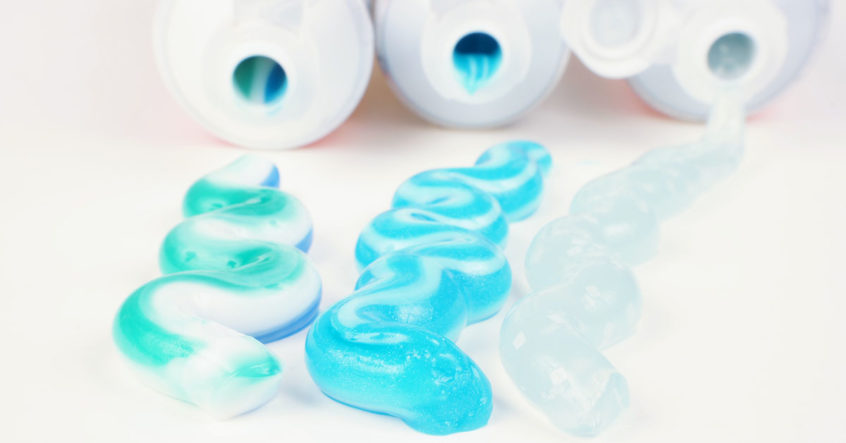Proper brushing is a key pillar of dental health, but if a trip down the toothpaste aisle seems daunting, then it’s time to explore the various types of toothpaste on the market. Learning about the differences and benefits of each type of toothpaste can help you select a toothpaste with confidence.
Anti-plaque
If you’ve ever accidentally skipped a day of brushing your teeth, then you have probably experienced the “fuzzy” feeling on teeth; that “fuzzy” feeling is caused by plaque, a sticky film of bacteria that can coat teeth if not brushed properly. Plaque builds up when sugars and starches are in constant contact with the teeth; the bacteria in the mouth feed off of these carbs and produce acids and if left unbrushed, eventually tooth decay. An antiplaque toothpaste contains ingredients reduce plaque by reducing the number of plaque-causing bacteria. Look for toothpaste that contains:
- Triclosan
- Zinc citrate
Anti-calculus
Calculus, more commonly known as tartar, is hardened bacterial plaque. Tartar isn’t something that can be quickly brushed off; in fact, it must be scraped off by a hygienist during a cleaning. How do you know if toothpaste fights tartar? Look for toothpaste with the following ingredients:
- Zinc citrate
- Pyrophosphate
Whitening
Anyone who enjoys a cup of coffee in the morning or a glass of wine at night probably experiences some degree of teeth staining; the good news is that mild stains can be brightened with the use of a whitening toothpaste. What makes a whitening toothpaste brighten smiles?
- An abrasive element
- A bleaching agent
While whitening toothpaste will not remove deeply stained teeth, these pastes are likely to produce brighter teeth in about six weeks.
Sensitive
If you have taken a bite of ice cream and felt pain, then you know firsthand how uncomfortable tooth sensitivity can be. Sensitivity can develop due to receding gums, gum disease, or exposed dentine. For individuals who experience pain or discomfort with hot or cold foods, a sensitive toothpaste can be very soothing. These toothpaste often are “low abrasion,” which means your sensitive pearly whites won’t be aggravated. Additionally, many sensitive kinds of toothpaste include ingredients that help block pain:
- Potassium nitrate
- Stannous fluoride
- Strontium chloride
Children’s toothpaste
Thanks to the bright and colorful packages, it’s easy to spot a children’s tube of toothpaste from a mile away, but children’s toothpaste offers more benefits than just an appealing tube.
- Kid-friendly flavors: Children’s toothpaste is usually flavored with fruit flavors or bubblegum as the typical mint is often too “spicy” for kids.
- Proper fluoride levels: While fluoride is important to help prevent dental cavities, swallowing too much fluoride is not good. Both the AAP and ADA suggest a “smear” of children’s toothpaste for children under the age of three; for children aged three and up, a pea-sized amount is suggested. Additionally, “training” toothpaste, those without any fluoride, are an option for kids to use as they learn to spit and brush properly.
If you have questions about which type of toothpaste is right for you, don’t hesitate to ask your dentist during your next cleaning.

